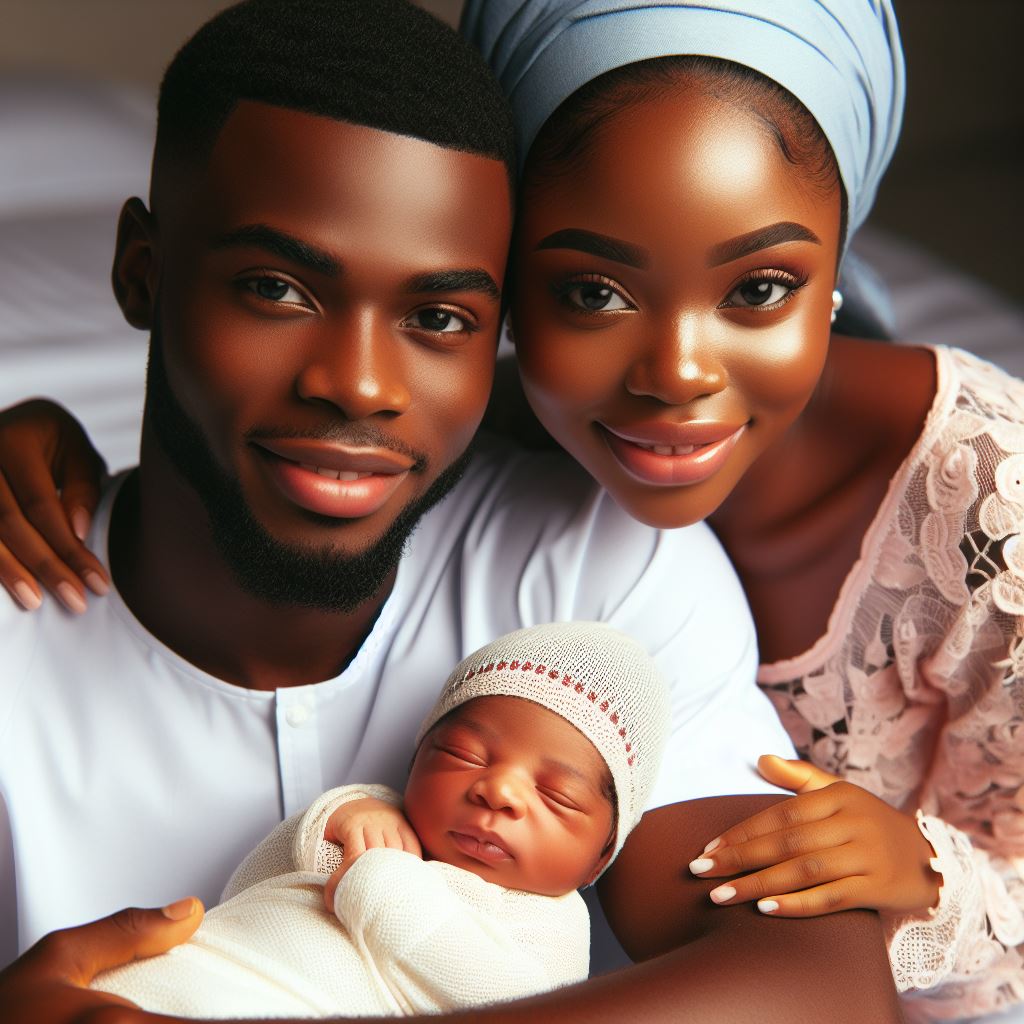Introduction
Creating a safe sleep environment for our babies is crucial to their well-being and overall health.
As parents, it is our responsibility to take all necessary precautions to ensure their safety while they sleep.
This blog post aims to shed light on the importance of creating a safe sleep environment for our little ones and provide useful tips to achieve this goal.
The safety of our babies during sleep cannot be overstated. Sudden Infant Death Syndrome (SIDS) is a heartbreaking reality that claims the lives of many infants each year.
By implementing simple yet effective measures, we can significantly reduce the risk of SIDS and create an environment that promotes healthy sleep.
The purpose of this blog post is to emphasize the significance of creating a safe sleep space for infants.
We will discuss various aspects such as the proper positioning of the baby, the ideal baby crib, potential hazards to avoid, and the importance of regular check-ins during sleep.
By adhering to safe sleep guidelines and implementing the recommendations provided, we can ensure that our babies have a safe and peaceful sleep.
It is crucial to create an environment that is conducive to their growth and development while prioritizing their safety.
So, let’s explore the essential factors that contribute to a safe sleep environment for our precious little ones.
Choosing the Right Sleep Surface
Importance of Using a Firm and Flat Mattress
- A firm and flat mattress is crucial as it reduces the risk of suffocation and Sudden Infant Death Syndrome (SIDS).
- Soft mattresses can cause a baby’s face to sink, leading to breathing difficulties.
- The firmness of the mattress helps to provide proper support for the baby’s developing skeletal system.
- A flat surface helps to keep the baby’s airways open and prevents them from rolling onto their stomach, reducing the risk of SIDS.
- Avoid using second-hand mattresses as they may not offer sufficient firmness and could have hidden damage or microbial growth.
Benefits of Using a Crib or a Bassinet
- Cribs and bassinets are specifically designed for safe infant sleep, ensuring a secure and cozy environment.
- Cribs have high, vertical bars that prevent the baby from getting trapped or falling out.
- Bassinets are smaller and easier to move, making them ideal for parents who want to keep their baby close at night.
- Both cribs and bassinets come with adjustable mattress heights, allowing you to lower it once your baby can stand and climb.
- Portable cribs and bassinets are convenient for travel, ensuring your baby always has a familiar sleep surface.
Ensuring the Sleep Surface Meets Safety Standards
- Choose a crib or bassinet that meets the safety standards set by regulatory bodies, such as the Consumer Product Safety Commission (CPSC).
- Look for certifications such as the Juvenile Products Manufacturers Association (JPMA) seal to ensure the product’s safety.
- Check if the sleep surface has slat spacing no wider than 2 3/8 inches to prevent the baby from getting trapped.
- Ensure the corners and edges are smooth without any sharp parts that could cause injuries.
- Regularly inspect the crib or bassinet for loose or missing parts to maintain a safe sleep environment.
Creating a safe sleep environment for babies is essential to promote their well-being and reduce the risk of accidents or health issues.
By choosing the right sleep surface, such as a firm and flat mattress on a crib or bassinet that meets safety standards, parents can ensure their baby sleeps soundly and securely.
Read: Caring for Preemie Skin: Gentle Practices
Positioning of the Baby
When it comes to creating a safe sleep environment for babies, the positioning of the baby is crucial.
By following proper positioning techniques, parents can ensure their baby’s safety and reduce the risk of Sudden Infant Death Syndrome (SIDS).
Parenting Made Just for You
Get personalized Parenting Solutions tailored to your child’s needs. Transform your parenting journey with expert guidance in 1-3 days.
Get StartedBack sleeping position
The most recommended sleeping position for babies is the back sleeping position.
Placing your baby on their back when they sleep helps reduce the risk of SIDS. It is the safest position for infants under the age of one year.
Back sleeping also encourages proper breathing and airflow, optimizing their lung development and overall health.
Avoiding stomach and side sleeping positions
Avoiding stomach and side sleeping positions is essential to prevent accidental suffocation or choking.
Placing a baby on their stomach or side increases the risk of restricted airflow, which can lead to serious breathing issues.
It is important to always place the baby on their back, even for short naps, to ensure their safety.
Supervised tummy time when the baby is awake
Supervised tummy time is vital for a baby’s development and should be implemented when the baby is awake.
Tummy time helps strengthen their neck and shoulder muscles, promoting motor skills and preventing flat spots on the back of their heads.
However, it is crucial to always supervise the baby during tummy time to prevent any accidents or discomfort.
When putting your baby to sleep, remember these key points:
- Always place your baby on their back for sleep.
- Avoid stomach and side sleeping positions.
- Ensure proper supervision during tummy time while the baby is awake.
By following these guidelines, you can create a safe sleep environment for your baby, minimizing the risk of accidents and promoting healthy growth and development.
Read: Newborn Skincare: What Nigerian Parents Must Know
The Importance of Eliminating Hazards in the Sleep Environment
Creating a safe sleep environment for babies is of utmost importance for parents and caregivers.
As babies spend a significant portion of their time sleeping, it is crucial to eliminate any potential hazards that may endanger their health and well-being.
Unveil the Perfect Name that Tells Your Family's Story
Let us help you find a name that embodies your family's values, traditions, and dreams. Our personalized consultation weaves cultural insights to create a name that's uniquely yours.
Get StartedRemoving suffocation and choking hazards
To prevent suffocation, it is essential to keep pillows, blankets, and stuffed animals out of the crib.
These items can potentially cover the baby’s face and obstruct their breathing.
Instead, parents should opt for a sleep sack, which provides warmth without the risk of suffocation from loose blankets.
When it comes to suffocation and choking hazards, even seemingly harmless items like pillows and blankets can pose serious threats to a baby’s safety.
The soft bedding can unintentionally cover the baby’s face, leading to suffocation.
Therefore, it is essential to remove these items from the crib and opt for safer alternatives, such as sleep sacks, which allow for proper air circulation while keeping the baby snug and warm.
Securing cords and electrical outlets
Babies are naturally curious and tend to explore their surroundings, including electrical cords and outlets.
Parents should take necessary precautions by securing cords and covering electrical outlets to prevent any accidents or injuries.
Cord organizers and outlet covers can be easily installed to ensure the baby’s safety.
Securing cords and electrical outlets is another critical aspect of creating a safe sleep environment.
Babies have a natural curiosity and may be tempted to tug or chew on cords, posing a risk of strangulation or electrical shocks.
By organizing cords and covering outlets, parents can prevent potential accidents and ensure the baby’s well-being.
Ensuring a smoke-free environment
Secondhand smoke can be extremely harmful to babies, increasing the risk of respiratory illnesses, sudden infant death syndrome (SIDS), and other serious health conditions.
It is crucial to maintain a smoke-free environment both inside and outside the house to protect the baby’s delicate respiratory system.
Parents and caregivers should refrain from smoking or allowing others to smoke near the baby, and ensure that the home is smoke-free.
Additionally, ensuring a smoke-free environment is vital for the baby’s overall health.
Secondhand smoke contains numerous harmful chemicals and toxins that can negatively affect the baby’s respiratory system, increasing the risk of respiratory infections, asthma, and SIDS.
By maintaining a smoke-free environment, parents can protect their baby from these serious health hazards.
By eliminating these hazards from the sleep environment, parents can significantly reduce the risk of accidents and promote a safe sleeping space for their babies.
Creating a safe sleep environment is not only about providing a comfortable crib but also ensuring that potential dangers are mitigated.
In fact, creating a safe sleep environment for babies involves actively eliminating potential hazards.
This includes removing suffocation and choking hazards from the crib, securing cords and electrical outlets, and ensuring a smoke-free environment.
By taking these necessary precautions, parents can provide a secure and healthy sleeping space for their little ones.

Temperature and Humidity Control
Keeping a safe sleep environment for your baby involves maintaining the right temperature and humidity levels in their room.
Babies are more sensitive to extreme temperatures, both hot and cold, which can disrupt their sleep and even pose health risks.
Maintaining a comfortable room temperature
To maintain a comfortable room temperature, keep it between 68 and 72 degrees Fahrenheit.
Avoid using heavy blankets or excessive clothing, and ensure good airflow by using a fan or opening a window.
Using a thermostat or a wearable temperature monitor
Investing in a good quality thermostat or a wearable temperature monitor can give you better control over the room temperature.
Look for programmable settings to adjust the temperature according to your baby’s sleep patterns.
Monitoring the humidity levels in the baby’s room
Monitoring humidity levels is equally important. Keep it between 30 and 50 percent to prevent dryness. A hygrometer can help you measure the humidity levels effectively.
If the air in the room is too dry, consider using a cool-mist humidifier. Regularly clean and maintain the humidifier to prevent the growth of mold or bacteria.
By maintaining the right temperature and humidity levels, you create a safe and comfortable sleep environment for your baby, promoting healthy sleep and reducing the risk of Sudden Infant Death Syndrome (SIDS).
Remember, babies cannot regulate their body temperature as effectively as adults, so it’s crucial to create an environment that supports their needs.
Regularly monitor and adjust the temperature and humidity levels to ensure your baby sleeps comfortably and safely.
Read: Navigating Preemie Health Concerns in Nigeria
Room Sharing vs. Bed Sharing
When it comes to creating a safe sleep environment for babies, the topic of room sharing versus bed sharing is often discussed.
While both options have their pros and cons, it’s important to understand the benefits and risks associated with each.
Benefits of room sharing
One of the primary advantages of room sharing is improved bonding and responsiveness between parents and their babies.
When a baby is sleeping in the same room as their parents, it becomes easier to monitor their needs and respond promptly.
This leads to better communication and a stronger parent-child bond.
Additionally, room sharing also has practical benefits, especially for breastfeeding mothers.
Having the baby within arm’s reach makes nighttime feedings significantly easier.
Instead of having to navigate through the house to attend to the baby’s needs, mothers can simply reach over and breastfeed, reducing disruption and encouraging better sleep for both mother and baby.
Risks of bed sharing
While bed sharing might seem tempting for its convenience, it poses serious risks to the safety of the baby.
One major concern is the increased risk of suffocation or accidental strangulation.
The soft bedding, pillows, and blankets on an adult bed create hazards that can obstruct a baby’s airways or lead to entrapment.
Another significant risk associated with bed sharing is the higher probability of Sudden Infant Death Syndrome (SIDS).
Studies have shown that sleeping in close proximity to adults increases the chances of SIDS due to factors such as overheating, restricted breathing space, or accidental overlay.
In short, while room sharing offers numerous benefits, including improved bonding and easier breastfeeding, bed sharing carries significant risks that should not be overlooked.
A safer alternative is to use a crib or bassinet in the same room for the baby’s first year to ensure a secure sleep environment while maintaining closeness and attentiveness.
Caregivers should prioritize the safety and well-being of the baby above all else, making informed decisions based on the latest guidelines and recommendations provided by pediatric experts.
Importance of a Consistent Bedtime Routine
Establishing a calming pre-sleep routine
- Begin by winding down your baby’s activities an hour before bedtime.
- Create a peaceful environment by dimming lights and reducing noise levels.
- Engage in soothing activities such as a warm bath or gentle massage.
- Read a bedtime story or sing a lullaby to help your baby relax and unwind.
- Consistently follow this routine to signal to your baby that it’s time to sleep.
Consistency in bedtime and wake-up times
- Set a consistent bedtime and wake-up time for your baby to establish a healthy sleep pattern.
- Stick to these times even on weekends or holidays to maintain a consistent sleep routine.
- Avoid delaying bedtime as it can disrupt your baby’s natural sleep-wake cycle.
- Consistency helps regulate your baby’s internal clock, promoting better sleep quality.
Promoting a conducive sleep environment
- Ensure your baby’s sleep environment is safe, comfortable, and conducive to sleep.
- Keep the room temperature cool but comfortable, around 68-72°F (20-22°C).
- Use blackout curtains or blinds to block out any excess light that may disturb sleep.
- Use a white noise machine or a fan to create a consistent and soothing background noise.
- Keep the crib clean and free from toys, blankets, or pillows that could pose suffocation risks.
- Use a firm mattress with a fitted sheet to provide a safe sleeping surface for your baby.
Establishing a consistent bedtime routine is essential for creating a safe sleep environment for babies.
By following a calming pre-sleep routine, setting consistent bedtime and wake-up times, and promoting a conducive sleep environment, you can help your baby develop healthy sleep habits.
Remember, consistency is the key to success when it comes to fostering a good night’s sleep for your little one.
Read: Navigating Newborn Health Checks in Nigeria
Conclusion
Summary of key points
Creating a safe sleep environment for babies is crucial to prevent Sudden Infant Death Syndrome (SIDS) and accidents.
Key points include proper crib bedding, room temperature, and a smoke-free environment.
Importance of prioritizing the safety of the baby’s sleep environment
It cannot be emphasized enough how important it is to prioritize the safety of a baby’s sleep environment.
SIDS is a real threat, and following safe sleep practices can significantly reduce the risk.
Babies should always sleep on their backs on a firm mattress with a fitted sheet.
Loose bedding, including blankets, pillows, and stuffed animals, should be avoided to prevent suffocation hazards.
The room temperature should be maintained between 68-72°F (20-22°C) and it’s recommended to use a sleep sack or wearable blanket to keep the baby warm without the need for loose blankets.
Parents and caregivers should ensure that the sleep environment is free from smoke, as tobacco smoke increases the risk of SIDS.
Smoking should be strictly prohibited in the house and around the baby.
Other safety measures include using a well-fitted crib with slats spaced no more than 2-3/8 inches apart, keeping cords and strings away from the crib, and avoiding the use of crib bumpers, as they can cause entrapment or suffocation.
Regularly checking the crib for any loose or broken parts is essential to ensure a safe sleep environment.
Additionally, breastfeeding has been linked to a lower SIDS risk, so it is encouraged whenever possible.
By prioritizing the safety of the baby’s sleep environment, parents and caregivers can provide a secure space for their little ones, promoting healthy growth and reducing the risk of SIDS and other sleep-related accidents.
Remember, a safe sleep environment is crucial for a peaceful and healthy sleep for your baby.




